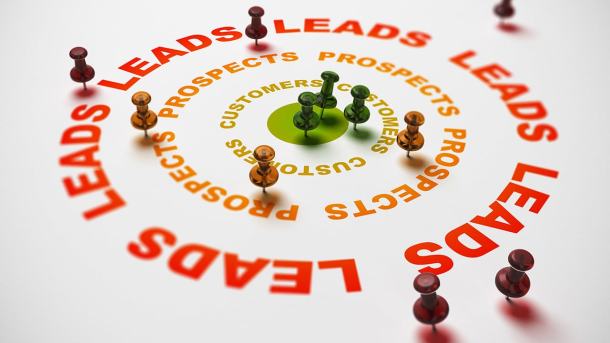Most sales leaders agree that B2B sales are on the verge of a great leap forward, with a series of changes that will redefine what it takes to succeed in the market over the coming years.
The use of data and analytics as part of a sales transformation or sales enablement program is allows sales people to forecast with increasing accuracy, their most valuable sales opportunities. In fact, forward looking companies are using data and advanced analytics to drive their sales productivity alongside revenue growth without adding to their sales teams or costs.

Future of B2B sales
The change in the B2B buyers journey where they self-educate via content, are technically savvy plus a preference for engaging via the digital networks, is leading the charge for a new breed of sales leaders who have digital expertise plus a strategic approach to engaging customers. The change in the buyer’s journey is also transforming the composition of sales teams with a move away from customer facing sales towards a growth in inside sales and social sellers supported by analytics functions.
Add in the shift towards subscription-based models and you can see why it is critical to re-evaluate how customer engagement is managed. The sales world of recurring revenues means that deals need to be won monthly, quarterly and yearly. Customer relationship salespeople will become increasingly more important and digitally connected sales teams are aligning themselves closely to the buying journey the customer undertakes.
Science is replacing Art in B2B sales
The disruption to the traditional buyer- seller model means B2B sales is becoming more science than art. Selling, customer acquisition and target selection is now more data-driven because of the range of digital tools and advanced analytics available to sales leadership. The focus is now firmly on really understanding the “what, why, and when” of the customer buying process. Research from McKinsey shows that organisations who have embraced “the science of B2B sales” are seeing over 2X times industry average revenue growth.
An interesting statistic from the research shows it is the CEOs of the leading pack who actively lead the sales transformation. They understand that redefining their go-to-market strategy require cross functional alignment and unified execution from sales, marketing, IT, finance and HR. The future of B2B sales will require sales leadership to fundamentally transform their go-to-market strategy around three defining pillars.
Pillar 1. Engage the customer the way they want to be engaged
The debate of salespeople v social v digital is over. Driving sales growth in the future means combining all these resources. However, digital assets (social media channels, content, social selling, data, digital sales tools etc) will be the glue that holds a successful multichannel sales strategy together. To support this pillar, research shows that while 76% of B2B buyers found it helpful to interact (via social media, phone or meeting) with a salesperson when researching a new product or service, this falls to 52% for repeat purchases of products with new features, and down to only 15% who want to interact with a salesperson when repurchasing the exact same product or service.
So, sales leaders will have to plan and cater to the different preferences of first-time and repeat customers.
Companies will use the social channels and digital sales tools alongside the more traditional sales interactions when targeting new prospects who seek direct interaction with salespeople. Examples here include sharing white papers, customer case studies, webinars and interactive product demos, which help salespeople engage customers in the awareness and consideration stages of their buying journey.
For the repeat customers who prefer the online channel, companies need to deploy “socially trained” inside salespeople to keep ensure retention plus speed up the sale process. The inside sales teams will focus on engaging this customer set via social media, email, live web chat, and even live video calls.
Pillar 2. Using data and analytics to make faster strategic and tactical decisions.
Forward looking organisations and leaders will use data and analytics to action key strategic sales issues, such as which market or set of customer profiles to target, what sales opportunities are worth pursuing, resources (and engagement) needed on selected accounts, and to identify sales behaviours required to increase sales productivity. Sales leaders of the future using science in B2B sales will use analytics to build a detailed profile, account and product plan for each of their customers and ideal prospects. These plans will then be enriched with external and social data such as news, financial information, management profiles and market trends to generate a 360-degree view of every customer.
Science will replace art or gut feeling for sales management to identify the sales behaviours that drive sales productivity or how to match the right people to the right deals. Sales performance will be linked back to actual sales habits (sales planning, time management, frequency of customer interactions, conversations, nurturing, prospecting, solution proposals, win/loss ratio etc) so management will be able to identify the best salespeople.
Pillar 3. Nurturing and Growing talent for the digital era.
The socially connect and digitally influenced buyer is increasingly sophisticated and interaction savvy, so sales leaders need to adapt accordingly. Hiring and training a new generation of cross-functional and multi-channel comfortable salespeople will be vital.
Finding the right talent will only be part of the jigsaw, companies will need to invest time and resources in nurturing and growing their sales force. Most current sales training is not fit for purpose, this is why you will see lots more articles on sales transformation or sales enablement.
Some interesting facts worth noting are that adults only remember 10% of what they heard and approx. 32% of what they saw, just three months after the training has finished. But an adult will remember 65% of what they learn by doing. This insight is driving a transformation in how companies deliver sales training. They are evolving from slow instructor lead classroom training to online digital modules and “on-the-job” training where coaches help the salespeople to learn from doing.

B2B sales trends
Getting started with the science of B2B Sales
A few tips on getting started with the science of B2B sales include:
Understand your current position. Begin by looking at the customer and how their buying preferences will impact the business. How customers buy (will buy) should determine what investments the sales organisation needs.
Take a longer-term view. What will change look like in 12, 24, 36 months? Taking a longer-term view means that sales leadership can plan for and invest in the right sales capabilities based on customer driven road-map.
Use data to test and learn. Buyer habits are changing faster than sales are responding, so speed matters now more than ever. Use whatever data on hand to test and learn, keeping the business nimble. Break down internal silos and set up a sales war-room to launch new multi-channel campaigns and messages. Maybe implement an agile test-fail-learn-adapt model to engage more buyers and then refine the sales tactics to include social selling, social reach, digital engagement etc.
The future of B2B sales will require vision, strong leadership and focus from the CEO and the leadership team plus an investment in time and resources to win out. However, companies using the three pillars in the science of B2B sales are already racing ahead of their competitors and driving sales growth at a faster pace.
No comments:
Post a Comment